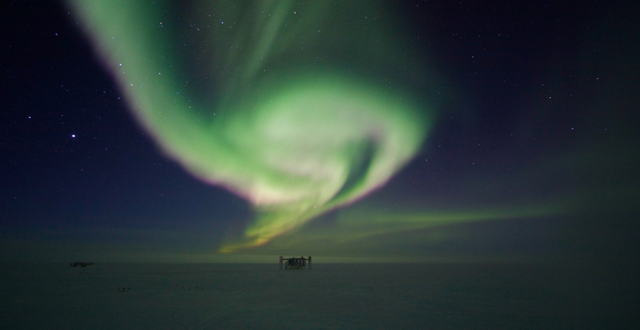A team of the IceCube Neutrino Observatory, a high-energy neutrino detector at the geographical South Pole in Antarctica, has reported results of a search for neutrinos emitted from 300 gamma ray bursts, observed between May 2008 and April 2010.

The aurora australis or Southern Lights above the IceCube Lab (Keith Vanderlinde / NSF)
Although cosmic rays were discovered about 100 years ago, their origin remains one of the most enduring mysteries in physics. Now, the IceCube team is exploring how these rays are produced.
“Although we have not discovered where cosmic rays come from, we have taken a major step towards ruling out one of the leading predictions,” said IceCube principal investigator Dr. Francis Halzen, a physics professor at the University of Wisconsin-Madison.
Cosmic rays are electrically charged particles, such as protons, that strike Earth from all directions, with energies up to one hundred million times higher than those created in man-made accelerators.
The intense conditions needed to generate such energetic particles have focused physicists’ interest on two potential sources: the massive black holes at the centers of active galaxies, and the exploding fireballs observed by astronomers as gamma ray bursts (GRBs).
IceCube is using neutrinos, which are believed to accompany cosmic ray production, to explore these theories.
Surprisingly, the team found none – a result that contradicts 15 years of predictions and challenges one of the two leading theories for the origin of the highest energy cosmic rays. The result appears in the April 19 issue of the journal Nature.
“The result of this neutrino search is significant because for the first time we have an instrument with sufficient sensitivity to open a new window on cosmic ray production and the interior processes of GRBs,” explained IceCube spokesperson Prof. Greg Sullivan of the University of Maryland.
“The unexpected absence of neutrinos from GRBs has forced a re-evaluation of the theory for production of cosmic rays and neutrinos in a GRB fireball and possibly the theory that high energy cosmic rays are generated in fireballs.”







